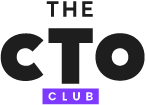As major women-in-tech organizations shuttered in 2024, many wondered if the movement for gender equity in technology had come to a sudden halt.
One of the most surprising closures was Girls in Tech, a group that—at its height—reached nearly half a million students nationwide. Girls in Tech reportedly faced a domino effect of reduced philanthropic giving, shifting corporate priorities, and broader cultural backlash, culminating in a sudden collapse that took many by surprise.
What happened to such high-profile organizations, and what does their disappearance mean for the next generation of diverse tech talent? According to research from McKinsey, companies with more than 30% female representation are significantly more likely to outperform those with fewer women—yet DEI initiatives are increasingly under scrutiny, leaving nonprofits and would-be technologists in a precarious position.
One group that has weathered the storm is Rewriting the Code (RTC), a global community of more than 35,000 women and nonbinary technologists. Founded by Sue Harnett, RTC has focused on data-driven programming, stable philanthropic partnerships, and robust mentorship—creating a blueprint for how tech leaders can still support women in tech.
“At a time when support systems are disappearing, we’re doubling down—proving that communities like ours can thrive if given consistent investment and a commitment to genuine inclusion,” says Harnett.
Below, we take a closer look at why these closures matter, how RTC is filling the gap, and what tech leaders can do to ensure a diverse talent pipeline doesn’t become a relic of the past.
Why the Closures Matter
Innovation Stalemate
An NCWIT report highlighted that girls with positive early coding experiences are far more likely to pursue advanced computer science courses and careers. When large-scale programs like Women Who Code or Girls in Tech shut down, thousands of potential innovators lose that pivotal early exposure to tech. The fallout is an industry-wide shortage of diverse perspectives.
For LaToya Anderson, a physics graduate turned quantum-technology researcher and RTC member who was often the only Black woman in her program, early and ongoing support was key:
“Being the only Black woman in many rooms can be tough, but [organizations like] RTC taught me to confidently convey my value. Lean into who you are, and you’ll naturally reinvent the space for everyone else. If you love hair styling, build an AI tool that helps stylists preview new designs. If you’re passionate about education, start a hackathon-to-mentorship event for unresourced schools.”
Financial Downfall
The Bureau of Labor Statistics predicts that computer and information technology occupations will grow by 15% from 2021 to 2031, much faster than the average for all occupations. But with fewer women entering the field due to diminished support structures, the tech sector could struggle to fill these roles—and lose billions in economic potential. An Intel–Dalberg study estimated that a lack of diversity in tech can cost the industry up to $16 billion annually.
This shortfall also impacts women from Indigenous communities, who often face even more barriers to funding and mentorship. Madeline Gupta, an RTC member who builds cultural-based tech solutions for her tribe, warns that the loss of these programs cuts off opportunities for entire communities:
“I use my engineering skills to help my tribe with projects like a VR recreation of Mackinac Island. Without robust nonprofits or corporate programs, many Indigenous women might never see what’s possible in tech. Representation matters deeply—especially for those who feel overlooked in mainstream spaces.”
Cultural Backlash
The shutting down of prominent DEI-focused initiatives and organizations appears symptomatic of a broader cultural shift in some parts of society, where diversity initiatives are questioned or defunded.
In the next few years, women, immigrants, and underrepresented groups—who often rely on these nonprofits for networking and skill-building—could find it increasingly hard to break into or remain in tech, particularly at major North American companies tightening their sponsorship or hiring policies.
For RTC member Angela Cao, a Data Scientist diagnosed with autism at age two, inclusive organizations can be life-changing:
“I’ve always been one of the few girls in advanced STEM classes, so joining a supportive community felt both refreshing and empowering. As an autistic woman, I navigate life on a different timeline—sometimes facing questions about marriage or career priorities. Success takes many forms, and an inclusive network reminds me that we each get to define our own path.”
Girls in Tech Live On—Locally
Despite the abrupt closure of Girls in Tech’s national apparatus, community members formed Discord groups to stay connected. Others joined or launched smaller initiatives, fueling a ripple effect of localized mentorship.
This underscores Harnett’s view that “tech thrives when people see role models they can identify with”—whether through large-scale nonprofits or grassroots efforts.
What Tech Leaders Can Do to Fill the Gap
- Invest Early Sponsor or create local outreach programs in K–12 schools. Early exposure is key to capturing interest before stereotypes about “who belongs in tech” solidify. Microsoft LEAP, for instance, introduces school-aged youth to tech careers.
- Offer Mentorship & Apprenticeships Provide structured apprenticeships or mentorship circles. According to a LinkedIn Workplace Learning Report, employees who receive quality mentorship are more likely to be promoted and stay at the company longer.
- Double Down on DEI Implement strategies beyond lip service—fund scholarships, host coding camps, or partner with nonprofits like RTC to build a diverse pipeline. Google sponsors scholarships and runs a robust summer internship program for marginalized identities.
- Retain & Promote Inclusive workplace policies, leadership training, and advocacy groups for neurodivergent or underrepresented employees can help you keep the talent you hire. IBM, Cisco, and others have in-house women in tech networks and have increased STEM funding in local communities.
Corporate initiatives are promising but may not fully replace the national reach or specialized focus that large nonprofits once offered. Partnerships with smaller, mission-focused groups like RTC could be key to ensuring that resources flow where they can have the greatest impact.
The Cost of Losing a Pipeline
Beyond the billions in potential revenue, a less diverse tech workforce yields fewer innovative solutions. Products risk being shaped by a narrow set of experiences, leading to software glitches, AI biases, and overlooked markets.
Harnett points out that collaborations are what keep technology inclusive. “I’m hoping that in 5–10 years, we see more women founders, CEOs, and industry leaders—our 35,000 members represent a powerful pipeline of talent ready to shape the world.”
And that pipeline runs through real people, each with a unique story of resilience.
A Beacon of Hope
RTC Founder Harnett shares that her organization spans 159 countries, offering mentorship, industry networking, and specialized communities for underrepresented groups. Corporate partners play a key role in sustaining the nonprofit.
She’s optimistic about the future of women in tech, saying, “Women bring essential perspectives to how products, services, and discoveries evolve. We need broad representation—varied life experiences and viewpoints—so technology serves everyone.”
For Indigenous educator and member of Latinas de RTC Angélica Lozano-Romines, who merges gaming with uplifting her Native community, this kind of all-in-one support is critical.
Harnett hopes that, with robust support, “women should have exposure to fields like AI ethics, VR, and quantum computing.” She envisions RTC bridging the gap between academic coursework—which often lags behind new technologies—and the real-world skills companies need.
Join the Movement
From corporate donors to individual allies, there’s room for everyone to help reverse the troubling trend of women-in-tech organization closures. Here are a few ways:
- Mentor an aspiring technologist
- Fund scholarships and training programs
- Amplify stories of marginalized voices in tech
- Partner with or donate to nonprofits like Rewriting the Code to sustain a new generation of women innovators
“If time and funding were limitless,” says Harnett, “I’d create an even larger community of women engineers across industries. Seeing role models in action broadens career horizons.”
Let’s ensure the loss of these once-prominent organizations isn’t the end of an era but the spark of a renewed, more sustainable push for women’s inclusion in the digital future.
To learn more or get involved, visit Rewriting the Code and subscribe to The CTO Club’s newsletter for more information.


